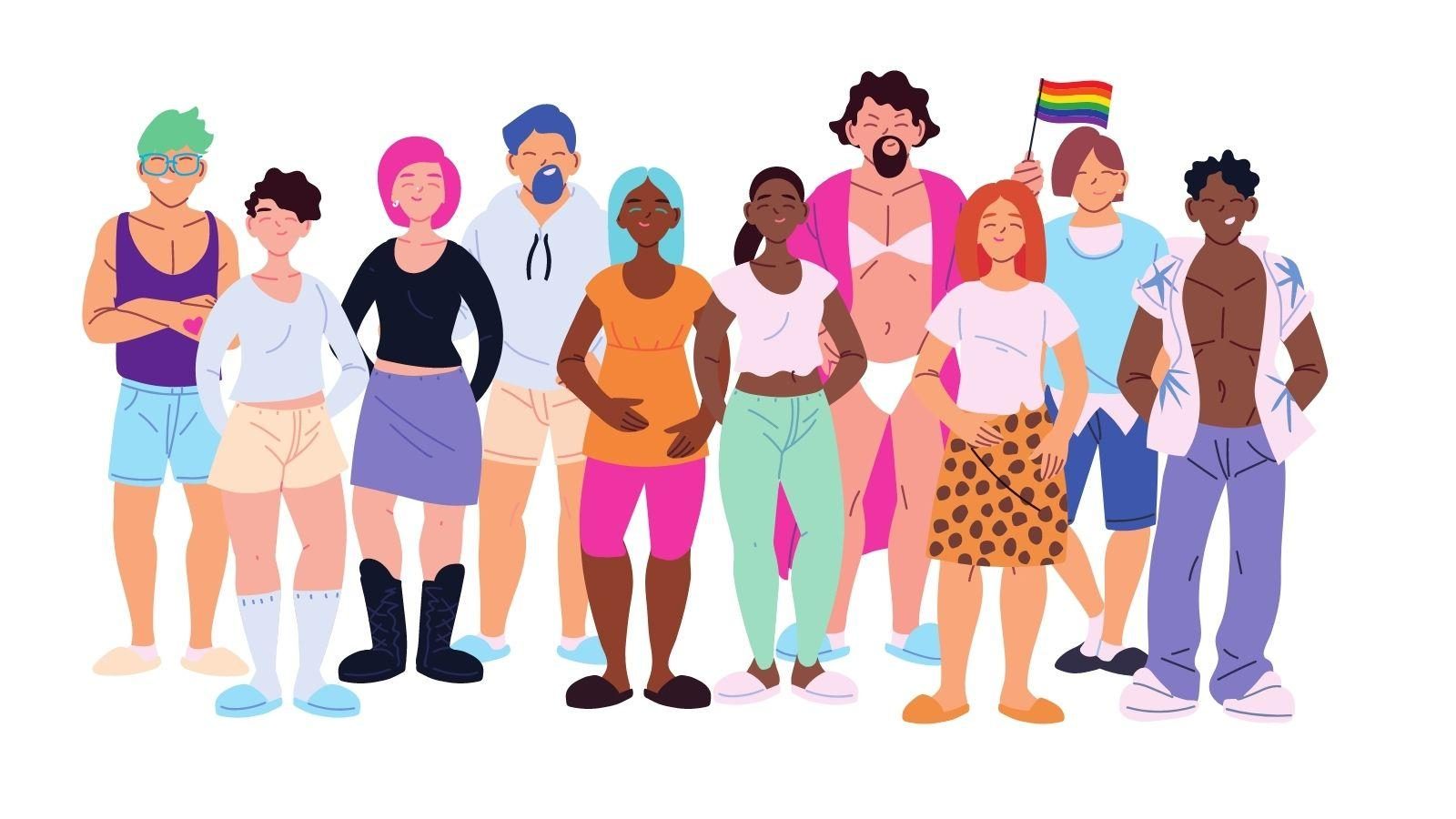
The LGBTQ community still faces stigma in accessing health care, and that leads to health disparities. We spoke with Ryan Health’s Janelle Eradiri, Care Technician/PrEP Specialist, and Kalyaní-Aindrí Sánchez, Diversity and Inclusion Program Manager, about what they’ve seen and how they’re helping to overcome these challenges for their patients in the health care system.
Are there disparities for LGBTQ+ people when it comes to health care? What are you finding?
JANELLE: Some providers feel that lesbian sex is not real sex, and so that population is often not acknowledged as having high risk. That’s a big issue because lesbians suffer from higher rates of gynecological diseases because they’re not screened for them. It's not a good idea to make assumptions because people’s sexual identities are becoming more normalized, and they’re more complex than people think. Some women who have sex with women aren’t lesbians — they could identify as queer, or pansexual or they might be having sex with multiple genders.
I can bring in my personal experience. When I was still trying to figure out my sexuality, I went to a clinic for STI testing. I remember the provider being judgmental towards me when asking questions about my sexual history.
Is that something gay men also face?
KALYANI: I think we have an over saturation of gay men’s health when it comes to HIV. Since the AIDS epidemic, it’s always been “all gay men should be careful, all gay men should be this or do that.” We can’t give blood, we can’t have sex without a condom, so I think in terms of our community there is a lot of judgment.
And to Janelle’s point I don’t think that women who identify as lesbian or bisexual have the same resources that gay men have. I’ve been doing public health work for a long time and the narrative was “lesbians don’t need to get tested for STIs because they’re lesbians.” Just because someone identifies as lesbian doesn’t mean their sexual behavior falls in line with that. We’re not check boxes that automatically prepopulate all the way down once you check a certain identity.
How much of what you each just said can change with the providers themselves?
JANELLE: Providers need to go through a constant training on sexual orientation and gender identity. It can feel invalidating or make you feel uncomfortable when you’re meeting a provider for the first time and they assume you’re straight. Why are you assuming that? You should just ask people how to do you identity because things like that can cause a patient to feel they can’t trust their provider. That can greatly affect their health outcome.
KALYANI: There’s traumatization when providers are not educated on people’s orientation or gender expression, or pronouns. If you go from provider to provider and you’re not getting the understanding you need, you internalize that as if it’s your fault. And then where do you go for resources?
As Janelle said, people need to be educated. I do our Sexual Orientation and Gender Identity (SOGI) training for providers, and it’s hard when providers don’t know what specific terms to use. One must practice cultural humility with the patients they’re working with.
How much is the intersectionality of a patient’s identification impacting their care? Are Ryan Health providers trained on that?
KALYANI: Ryan Health has taken steps to be more inclusive. We’re able to have conversations about gender and orientation. All providers are trained on SOGI. We have resources should people have questions. As an organization we’ve committed to making sure we’re a safe space for LGBTQIA+.
JANELLE: Terms are constantly changing, it’s important to open up those lines of communication to get people to feel comfortable asking questions and to just being in a state of constantly wanting to learn for the betterment of our patients.
KALYANI: Inclusivity is important. We have individuals representing LGBTQIA+ working at Ryan Health. I’ve worked at organizations who were awarded grants to work with transgender people but there are no transgender people on staff. Throughout the last few years there’s been massive commitment to ensure that all the communities we’re providing services to are represented on the team at Ryan Health.
Is there one health issue we need to raise awareness of, or is there an emerging issue to be aware of? What is the greatest health challenge?
JANELLE: HIV is still heavily stigmatized within communities of color. I wasn’t around in the 80’s and HIV is not what it was then but it’s still a work in progress. It’s important for Black women to be acknowledged more and to be represented within that effort. For a long time, people just associated HIV with men who have sex with men.
Black women are often forgotten about, but here intersectionality plays a big role even though it’s a concept that’s still new to people. Intersectionality is just talking about how people who are part of marginalized groups might feel and how that impacts their daily lives.
If you’re Black, you’re a woman and you’re also queer those are three different marginalized groups. And that needs to be taken into consideration when we try to figure out how to reach this population, how do we cater to their specific needs and make them feel like they’re included and important?
KALYANI: The reality is that yes, many stigmas still exists about HIV, especially in communities of color, especially when it comes to heterosexual Black and Latina women and HIV.
Resources
- Everything You Need to Know about Pride Month: People.com
- Stonewall Uprising – The year that changed America: Click for a PBS special and more resources.
- LGBTQ glossary: Look here for terms used by and for the LGBTQIA+ community.
- Guide to being a straight ally: Presented by PFLAG